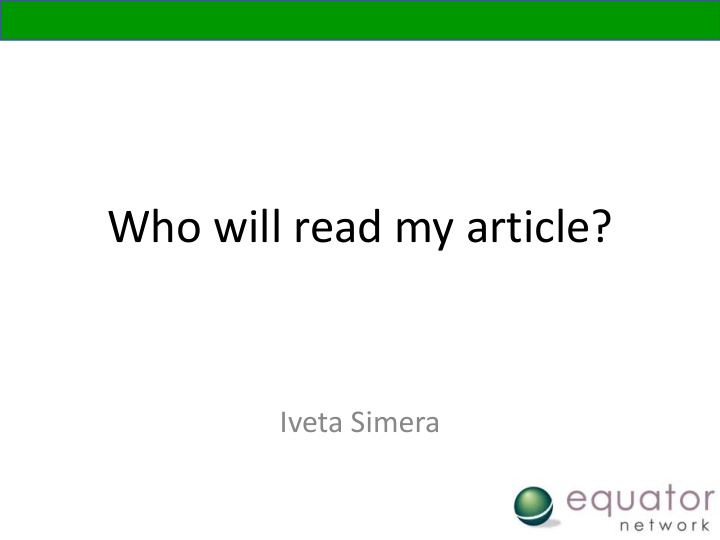



Who will read my article? Iveta Simera
Outline • Liz: – Identify your audience – Keep your readers in mind • Who might read my article • How they will read it / how they will use it • Will it be good enough for that purpose • Practical exercise
• Who might read my paper? – Clinicians – Researchers – Patients • How will they use it? – Quick scan – Systematic review – Clinical guideline Picture: imperial.crf.nihr.ac.uk
Is my research article written in a way that it can be potentially included in a systematic review?
Systematic reviews • Key steps: – Formulation of a clear question – Eligibility criteria for studies – Search for potentially relevant studies – Selection of studies into the review – Extraction of data – Assessment of methodological quality of included studies (risk of bias) – Synthesis of findings (possibly using meta-analysis) – Presentation of data and results – Interpretation and drawing conclusions injuries.cochrane.org
Systematic reviews • Key steps: – Formulation of a clear question – Eligibility criteria for studies – Search for potentially relevant studies – Selection of studies into the review – Extraction of data – Assessment of methodological quality of included studies (risk of bias) – Synthesis of findings (possibly using meta-analysis) – Presentation of data and results – Interpretation and drawing conclusions injuries.cochrane.org
Assessing risk of bias A critical element of a systematic review • Risk of bias results from suboptimal methods • Methods need to be reported well to allow assessment of risk of bias 7
Assessing risk of bias 8
Exercise • Cochrane RoB tool and guidance • Read the article – methods section • Assess RoB using Cochrane guidance – Sequence generation – Allocation concealment – Blinding (participants, intervention providers, outcome assessors)
Exercise - feedback
2011 2011 2011 11
RoB assessment by Cochrane authors
Assessing risk of bias A critical element of a systematic review • Risk of bias results from suboptimal methods • Methods need to be reported well to allow assessment of risk of bias SERIOUS problem: Unclear description of methods
Key messages • Advantage to understand the SR development methodology • Provide a sufficient description of my research methods and findings that can satisfy even thorough scrutiny by systematic reviewers • Better usability of my article = bigger IMPACT of my research !
https://twitter.com/SarahChapman30/status/650934173759311872
Recommend
More recommend